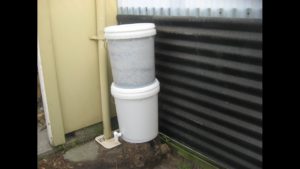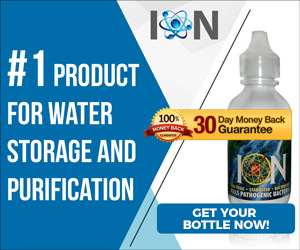 Water is life, and without water you will not survive for very long. Knowing how to find and treat water to make is safe for drinking will be an essential skill if you want to survive any emergency or disaster.
Water is life, and without water you will not survive for very long. Knowing how to find and treat water to make is safe for drinking will be an essential skill if you want to survive any emergency or disaster.
You can only last approximately three days without water, and this time will vary depending on your climate and activity level. Going without water even for a day will cause dehydration, and this causes muscle cramps and affects your mental abilities. Finding and treating water for drinking and cooking will be the difference between survival or death.
Sourced Water Vs. Ready to Use
Having access to water is something we take for granted today. We can walk to our kitchen sink and get any amount of water we want, cold or hot. In a disaster or emergency situation you may not have this luxury or access to drinking water. If we lose power we definitely will not have access to our tap water. One way to ensure there is water in emergency situations is to have enough water stored for each person in the household for a minimum of 72 hours. A safe amount is 15 gallons per person per day. For a family of four, that is 60 gallons per day, or 180 gallons for the 72-hour period. If you are unable to store this amount of water then you must source this water.
Sourced water is what you would gather during an emergency or disaster. Having a water catchment system is one way to source water and store it as well. I consider this sourced water because you will still have to treat the water before use. I will talk about this more later.
Finding a source of water will depend on the area you are in, and you could have one close by like a creek or river, or you may have to travel to the closest source. Either way, you will have to get the water from the source back to your location. If you are in a situation where you had to leave your home and are on the move, you will want to locate a source and make camp close by.
Once you have your water you will then need to treat the water to make it safe for consumption. This can be accomplished by purifying or filtering the water you have source. The difference between filtering and purifying can be found here.
Purifying your Water
There are a few different ways to purify water, and the most common is by boiling. The others are using bleach or iodine and water treatment pills. With bleach, you will want to use 15 to 20 drops per gallon and let the water sit for about 30 minutes. If there is not a slight bleach smell or taste, you may have to add more. Iodine is used in the same manner, but the taste can be less tolerant than the bleach. This is also not safe for pregnant women.
Water treatment pills can also be used, but follow the directions for the particular brand tablet as they may vary.
Boiling water requires you to have a fire safe container as well as a fire. You will need to bring the water to a boil and let it boil for at least 10 minutes. You will of course have to let the water cool before it can be consumed, so this purification method takes time.
These methods will remove any microbes, bacteria, and viruses in the water, but will not remove large particles. This is where filtering the water will be necessary.
Making a Filter

Water filters can be easily made and you can make one with two water bottles, or go as big as a five gallon buckets. Whichever containers you choose to use you will need two of them and be able to put holes in one.
The basic concept is layering sand, rock, and carbon to filter out the large particles from you water. You will want to make your layers of all three and then repeat the layers. The more layers you can make the better.
You will need to put holes in the bottom of the container with the filter materials and place it on top of your other container. Pour the water in the filter and it will pass through the materials out of the holes and into your catch container.
Filtering the water will take time so be prepared to wait. You will also want to use a purification method discussed previously with the filtering method. If you cannot do both because of time or resources, then I recommend you purify the water then use some type of cloth to remove the largest of the particles. It does not matter in which order you do either as long as you are able to do both. There will be some situations where filtering is the only option, and this is OK, but just know that you may not get the particulates that cause illnesses out.

Personal Water Filters
There are filters on the market that can be use, and these will allow you to drink directly from a water source. You can also find larger portable filters that will filter water through into a container that is easily transported. When selecting a filter, be sure to understand exactly what is getting filtered out. If it is just getting the large particles, and leaving the bacteria or viruses, then know that you could still get sick. Lifestraw can be found here. My review for the Lifestraw can be found here.
Ion Water Purifier
There is a liquid purifier on the market that can purify your water quickly and not leave the water tasting bad. The product is called Ion and it will kill most particles that causes illness from sourced water. What I like most about this product is that it can be used to treat water for long term storage or as you need to drink the water. There are other benefits to this product aside from the purification aspect, and you can learn about them here in the product review, or here from the company.
Conclusion
Water is life, and in and emergency situation you will need to have enough to survive. Knowing how to source and treat water is an essential skill to survival, and one I hope you consistently consider and work on. However you decide to ensure you have the necessary water for survival, just make sure you have access to the amount of water you will need.
